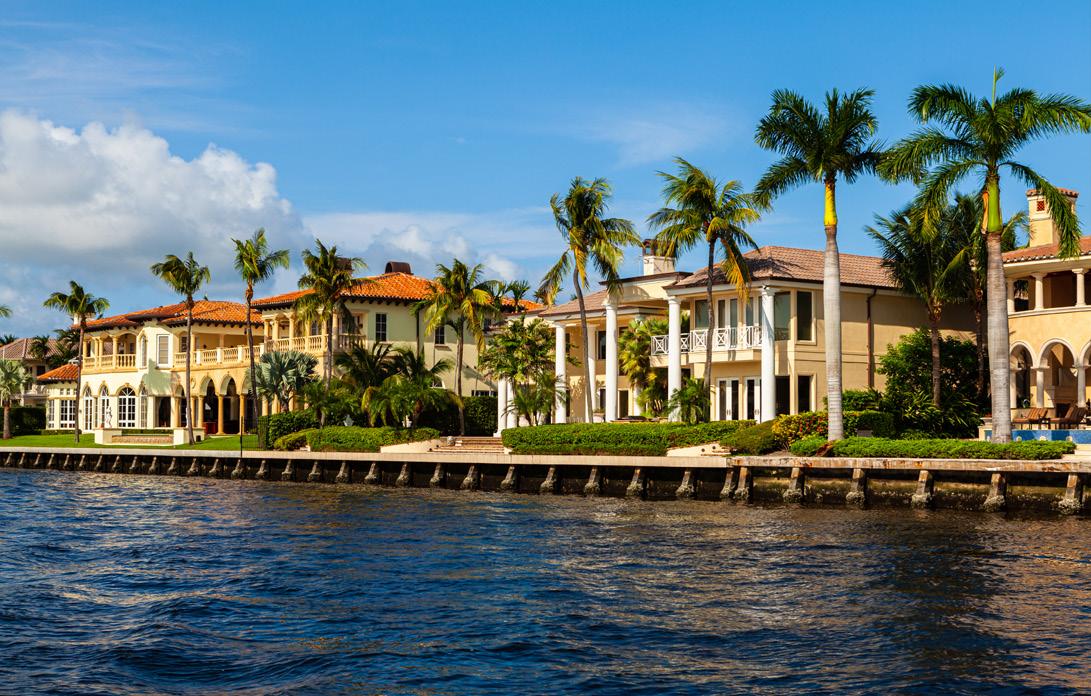
3 minute read
Realtor® Attorney Joint Committee
Waterfront Property Transactions
By: Erin Hope Christy, Attorney at Law, Shumaker, Loop & Kendrick, LLP
With miles of coastal beaches, intercoastal mangrove views, and natural rivers and lakes throughout southwest Florida, it’s no secret people flock to Florida in search of the sweet life filled with sun, sand, and water. The dramatic population influx to the gulf coast of Florida has found more and more agents dealing in waterfront property transactions. It’s important to be prepared so you can help your customers find a home that fits their needs. Whether your customer is looking for move-in ready, a fixer-upper, or vacant land, knowing what to look for and how to understand your customer’s needs will go a long way in guiding the search. While there are seemingly endless waterfront considerations in Florida, this article will focus on a few most commonly encountered issues.
DOCK VS. PIER
customer’s intended purpose. Unless the residence is grandfathered-in, the ability to renovate a property in Zone A or Zone V flood zones will depend on the structure’s compliance with elevation requirements. A buyer will want to get an elevation certificate along with their survey to confirm any future projects, even ones like replacing a roof, are not held-up or denied due to existing improvements below the base flood elevation.

If your customer is purchasing a home on the water with a dock, understand that a dock does not mean boat-able water. Our state and local governments work with owners to ensure property rights, navigation, and natural resources are protected while providing access to waterfront property owners. You may see a dock on a property that actually only functions as a fishing pier. A dock is a structure extending from the shore over water used for the purpose of securing and providing access to ‘buoyant vessels’ while a pier is a structure which is used primarily for fishing, swimming, or launching non-motorized vessels such as canoes or kayaks. Often, the difference in the ability to use the dock or pier is determined by the depth of the water. Your customer should order a bathymetric survey to determine water depths, not only at the entry point, but also out to navigable water, and confirm with the proper municipality whether their boat will be navigable from their lot.
FLOOD ZONES IMPACT RENOVATIONS
Similarly, you’ll want to understand your customer’s intent to use the residence and their plans for future renovations. Flood zones and proximity to water play corresponding but different roles in the analysis of whether the property will work for your
CONSTRUCTION LIMITATIONS
If your customer is eying property along the shoreline and looking at the possibility of adding on to a home or tearing down an existing home and building a new one, they need to be mindful of the long road that could be ahead of them. Local and state lines have been established that limit construction near the shoreline and require special variances before a person can add or replace any square footage seaward of those lines. In Sarasota County, construction occurring seaward of the Gulf Beach Setback Line requires approval by the Board of County Commissioners, even if there is already a structure on the property. The variance application is intense, requiring boundary and topographical surveys, site plans, and a written application addressing the criteria for approval. This process can take between 4-6 months and cost tens of thousands of dollars to complete.
Seeking guidance from an attorney, architect, and contractor as part of your due diligence for any property on or near water is important as there can be unexpected challenges. •
This article is meant for educational purposes only. It is not intended to serve as legal advice and should not be used as a substitute for consultation with an attorney.







